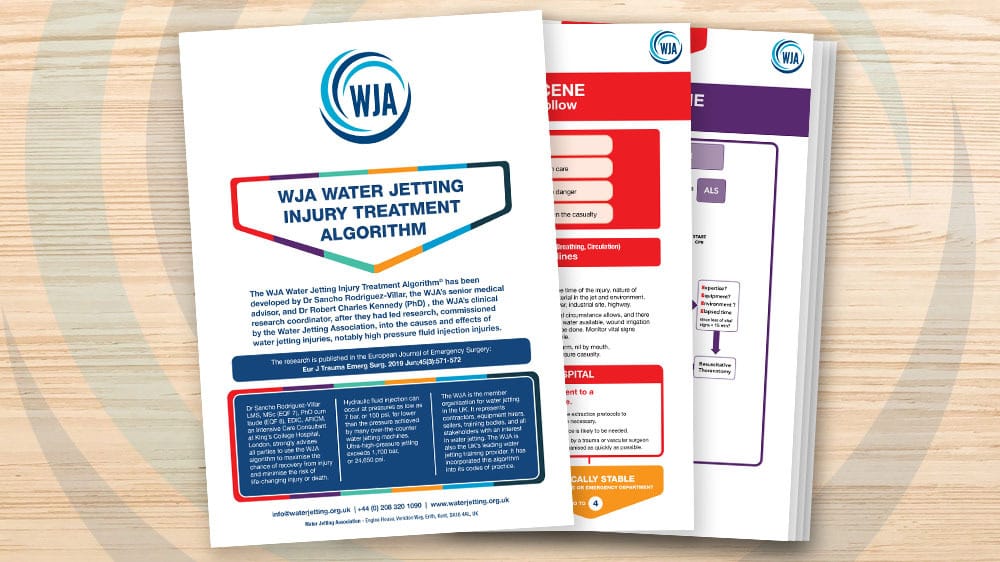WJA-backed research aids clinicians and patients around the world

A study commissioned by the Water Jetting Association into the management of high pressure fluid injection injuries has been accessed via a leading journal and a medical database almost 10,000 times in four years.
The study has also been cited in five specialist medical papers over the same period, making it one of the most important and widely-referenced research papers on the topic in the world.
Now, an injury treatment algorithm, developed as part of the research, has been updated so it is easier to view and use.
The WJA Water Jetting Injury Treatment Algorithm gives step-by-step best practice guidance on the treatment of water jetting injuries from first response through to definitive hospital care.
World leading
The water jetting injury research was led by Dr Sancho Rodriguez-Villar, an Intensive Care Consultant at Kings College Hospital, London, and Dr Robert Charles Kennedy (PhD), the WJA’s Clinical Research and Development Advisor.
Dr Rodriguez-Villar said: “This study is currently one of the most important sources of expert opinion on high pressure fluid injection injuries in the world. It is a complex multidisciplinary work involving the knowledge from the industry and three medical specialties.
“Researchers and clinicians are clearly finding it useful. It is highly likely that doctors and surgeons around the world are searching for advice on such injuries, finding this research, and using it to guide their treatment.
“In this sense, it is having the desired and very important effect of educating clinical teams about how to treat these unique and serious injuries. This, in turn, will be greatly improving the treatment outcomes for patients, contributing to their long-term health and wellbeing.”
The study is called the Management of Industrial High Pressure Fluid Injection Injuries (IHPFII): the Water Jetting Association Experience with Water Driven Injuries.
It was published in the European Journal of Trauma and Emergency Surgery in March 2019, and is also available via the medical database Researchgate.
Minimising risk
Since then it has been accessed nearly 10,000 times, aided by the WJA’s decision to pay for a publishing licence that allows free access and download, so as many people as possible have the chance to view its content.
The WJA Water Jetting Injury Treatment Algorithm advises first aiders, paramedics and clinicians on how to optimise treatment, reducing the risk of death, long-term disability or unnecessarily prolonged periods of recovery.
The algorithm has now been designed in an A4 format so it is easily viewed both online and offline. Its sections are also colour-coded so users can easily follow a patient’s journey through a treatment pathway.
Delayed treatment
IHPFII injuries are characterised by small entry wounds, caused by the fluid jets, and no exit wounds. This can mask the extensive internal disruption they can cause. Debris and bacteria can be also carried far into the body, increasing the risk of serious infection.
These factors can lead to delays in patients receiving the appropriate emergency treatment. This can result in complications that, in worst cases, cause life-changing serious injury or death.
Robert Kennedy said: “The evidence shows that, without early and correct intervention, the outcome for those injured is often catastrophic. We strongly advise all parties to observe the WJA’s algorithm for the management of high-pressure injection injuries.”
Find out more
View the IHPFII study here: https://link.springer.com/article/10.1007/s00068-019-01106-4
View the WJA water jetting injury treatment algorithm: Click Here
Do you have an interest in water jetting injuries? Talk to the WJA: call +44 20 8320 1090 Email info@waterjetting.org.uk.

